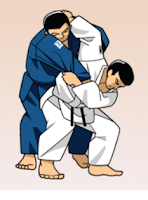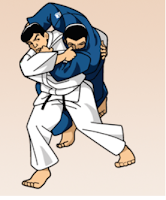I recently interviewed a restaurateur who told me two interesting things about the restaurant menu. Firstly, he says it's important to set the menu according to the demographics of your customer base. Secondly, it's important to regularly update your menu to keep the offering fresh and interesting. And so it is with judo classes as well.
Tweak according to changing demographics
Judo membership is not stagnant. You'll always have your core players who will stick with you through thick and thin but it's only to be expected that some members will leave and some new ones will join. As the membership situation changes you have to tweak your offering accordingly otherwise you would not be serving your members well.
KL Judo is at its heart, a competitive judo club. But that doesn't mean all our players are competitors. Our core players are but many new ones are recreational players who don't necessarily want to train several times a week and who prefer to focus on learning techniques rather than honing their fighting skills.
So, we've decided the general class will be on Sunday. This is when most people can show up. We used to have general classes on Tuesdays and Fridays as well but these were never well-attended and the ones who came tended to be the competitors. So, we've decided to reserve Tues & Fri sessions for personal training for competitors. Members who are not competitors are allowed to join in but they must understand that the focus will be on drills designed to improve competitiveness. It will be very different from Sunday classes.
Updating the training program
During the fasting month we introduced something new to our Sunday class that proved to be popular. Our Sunday sessions are in the afternoon, when our Muslim members were still fasting. So, instead of three full hours of hardcore, non-stop training, we focused more on technical development (rather than drills, which would have been more tiring) and we stopped the structured training after two hours. The last hour was considered "free practice" time where players can decide what they wanted to focus on. Some wanted more technical instruction, some wanted to work on specific techniques, some wanted to do some more randori. It was fine, people could do whatever they wanted to do.
Even though fasting month is over, we are going to keep going with the "free practice" concept for the last hour or so of training. The recreational players can use the time to work on the techniques in the grading syllabus. The competitors can use the time to work on drills. People who can't get enough of randori can use that time to do more sparring. We think having a "free practice" segment is a good concept.
As for the Tuesdays and Friday sessions, since these are not general classes anymore we will focus on drills designed to improve their competition skills. This includes gripping drills as well as specialized uchikomi and nagekomi.
 |
| Weekday sessions involve a smaller group so we focus on personal training rather than general training. |
Tweak according to changing demographics
Judo membership is not stagnant. You'll always have your core players who will stick with you through thick and thin but it's only to be expected that some members will leave and some new ones will join. As the membership situation changes you have to tweak your offering accordingly otherwise you would not be serving your members well.
KL Judo is at its heart, a competitive judo club. But that doesn't mean all our players are competitors. Our core players are but many new ones are recreational players who don't necessarily want to train several times a week and who prefer to focus on learning techniques rather than honing their fighting skills.
So, we've decided the general class will be on Sunday. This is when most people can show up. We used to have general classes on Tuesdays and Fridays as well but these were never well-attended and the ones who came tended to be the competitors. So, we've decided to reserve Tues & Fri sessions for personal training for competitors. Members who are not competitors are allowed to join in but they must understand that the focus will be on drills designed to improve competitiveness. It will be very different from Sunday classes.
Updating the training program
During the fasting month we introduced something new to our Sunday class that proved to be popular. Our Sunday sessions are in the afternoon, when our Muslim members were still fasting. So, instead of three full hours of hardcore, non-stop training, we focused more on technical development (rather than drills, which would have been more tiring) and we stopped the structured training after two hours. The last hour was considered "free practice" time where players can decide what they wanted to focus on. Some wanted more technical instruction, some wanted to work on specific techniques, some wanted to do some more randori. It was fine, people could do whatever they wanted to do.
Even though fasting month is over, we are going to keep going with the "free practice" concept for the last hour or so of training. The recreational players can use the time to work on the techniques in the grading syllabus. The competitors can use the time to work on drills. People who can't get enough of randori can use that time to do more sparring. We think having a "free practice" segment is a good concept.
As for the Tuesdays and Friday sessions, since these are not general classes anymore we will focus on drills designed to improve their competition skills. This includes gripping drills as well as specialized uchikomi and nagekomi.
























